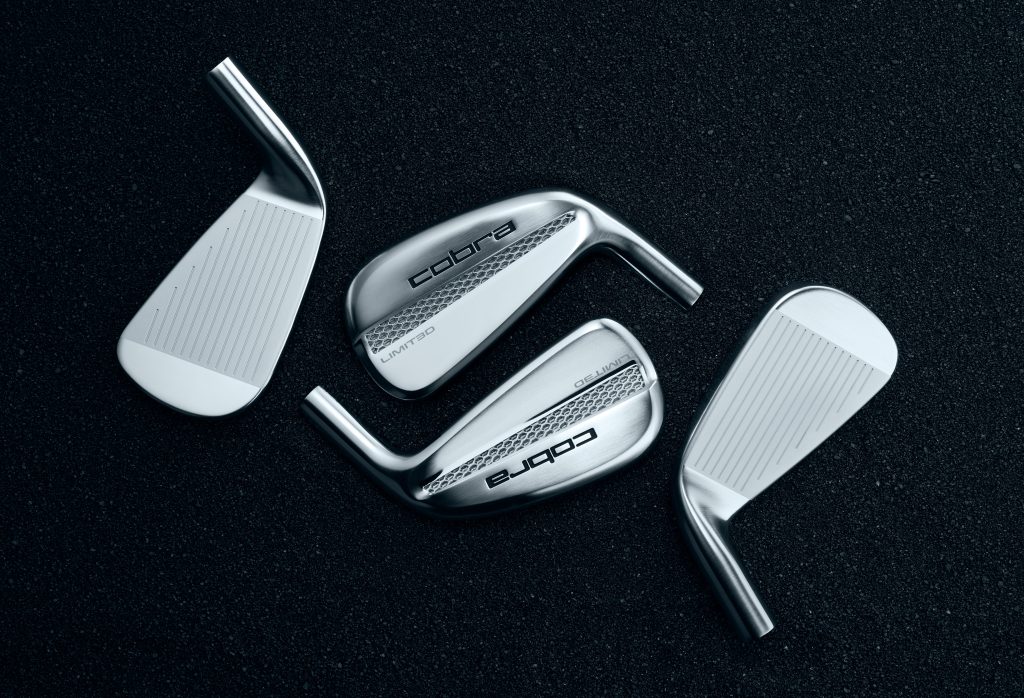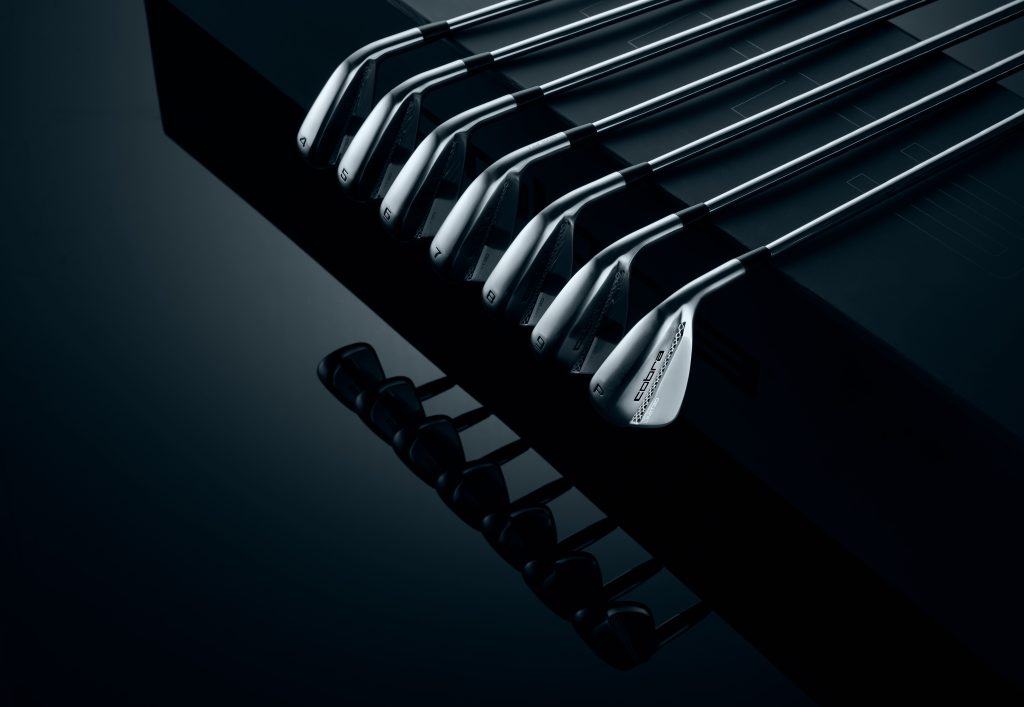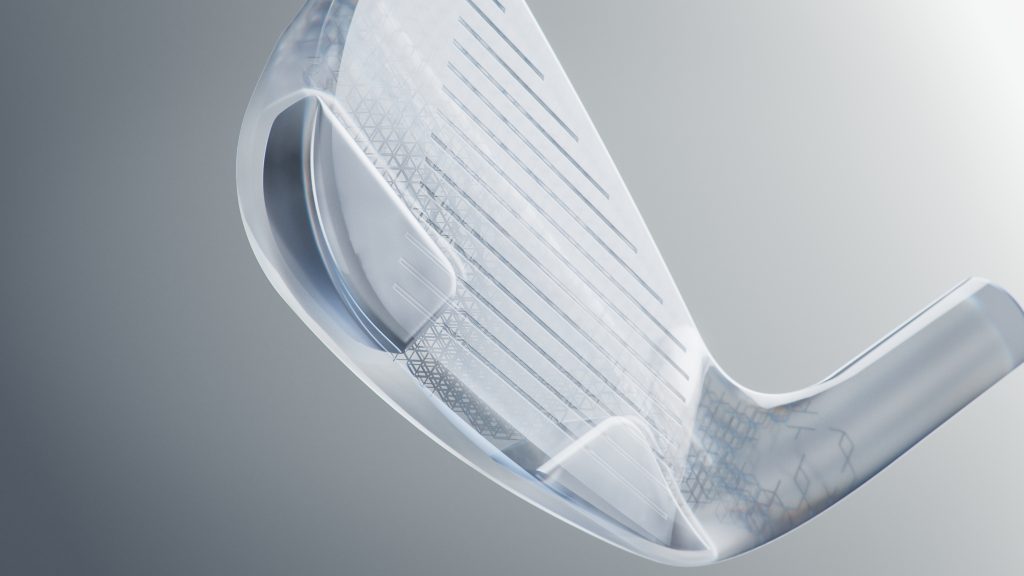3D printed steel irons represent a groundbreaking innovation in the golfing world, according to Mike Yagley, VP of Innovation and A.I. at Cobra Golf. The LIMIT3D clubs are a “world first for the golf market,” says Yagley, “the first ever set of commercially available 3D printed steel irons.”
Made from 316L stainless steel, the new LIMIT3D product line was designed with nTop software and 3D printed using direct metal laser sintering (DMLS) technology. The resulting club head, with its internal lattices and features that add a high degree of forgiveness, could not be manufactured using conventional means.
3D Printing Industry interviewed Mike Yagley and Ryan Roach, Director of Innovation at Cobra Golf, to learn more about this new addition to the 3D printed sporting goods market.
They highlighted key benefits offered by additive manufacturing, which enabled Cobra to separate form and function within the golf club’s design and cut development times in half.
Roach stated that the 3D printed iron “looks and feels like a professional player’s club, but has the forgiveness and playability benefits of a game improvement club.” Yagley noted that this combination is a “big deal in golf,” with some players considering it “the biggest innovation in irons for 10 years.”
Additionally, they discussed the promising future of 3D printing for the mass production of sports products, predicting it will play an increasingly crucial role in golf club manufacturing.
The LIMIT3D golf irons will be released as a limited run of 500 sets on 7 June 2024, with prices starting at $3,000.

Cobra Golf’s 3D printing experience
Founded in 1973, Cobra Golf is well known for its use of metal additive manufacturing. “We have a long history with additive,” explained Roach, who highlighted that the company first adopted 3D printing to accelerate its development process.
Cobra soon began leveraging its 3D printing capabilities to produce specialist clubs for its core partner players, enhancing their performance with precision-engineered equipment.
The company has completed over 25 3D printed clubs for professional players. For instance, American professional golfer Rickie Fowler has previously used a unique 3D printed putter from Cobra that was designed to offer more consistent roll and put distance.
According to Roach, this experience validated the value of 3D printing for golf club production, leading Cobra to exploit the technology for the commercial market.
In 2020, the company launched its 3D printed KING Supersport-35 putter, produced in collaboration with HP and Parmatech. This club features a full-3D printed metal body that incorporates a lattice structure to optimize its weight distribution.
HP Metal Jet 3D printers were used to produce the putters due to their rapid processing times and design adaptability. These capabilities allowed Cobra to prototype 35 designs in just eight months. The launch of the KING Supersport-35 was followed in 2021 by a full line of KING 3D printed multi-material putters.

3D printing high-performance golf irons for the consumer market
Why has Cobra chosen to 3D print its new golf irons? According to Roach, additive manufacturing has solved a key problem in golf by combining the aesthetics and feel of a professional club with accessibility for all players. 3D printing has allowed the team to unlock designs that “aren’t possible with casting and forging to make the club look and feel better.”
Key to achieving this combination is lightweighting, something which Roach sees as a significant advantage of metal 3D printing. DMLS has enabled Cobra to integrate a lattice structure inside the LIMIT3D club, making it 100 grams lighter than a conventional solid metal golf club. The 3D printed lattice enables 33% of the clubhead weight to be redistributed, maintaining the club’s overall strength while enhancing balance and control.
This weight reduction facilitated the addition of two tungsten blocks at the club’s base, lowering the center of gravity (CG) and significantly enhancing golf performance. Combining a low CG with a high moment of inertia (MOI) enables increased ball speed and greater forgiveness, resulting in longer and more accurate shots.
This is backed up by Yagley, who claims that the LIMIT3D club has allowed him to hit shots that “he’s never been able to achieve with any other golf club.”
Additive manufacturing also enabled Cobra Golf to realize time and cost savings in the development and production of its LIMIT3D steel iron. DMLS 3D printing allowed the company to launch the product to market in half the time it would have taken with casting or forging.
Central to these savings is the rapid iteration capability, eliminating the need for new tooling with each adjustment. According to Riach, this saved the company “a lot of money,” and allowed Cobra to make significantly more design changes “than if we had relied on tooling.”

Cobra Golf leverages nTop software
Cobra Golf utilized nTop’s engineering software to design its LIMIT3D golf irons. nTop’s platform was vital in achieving an optimal internal lattice design for the club. According to Roach, nTop unlocked Cobra’s ability to “take this design from idea to market.”
The Cobra team found that designing lattice structures with their previous software was a highly cumbersome process. Roach noted that nTop handled the lattice design calculations much more efficiently, “allowing us to more quickly iterate and determine the best lattice for our product.”
This process saw the team move from an initial body-centered cubic design to a dodecahedron shape, which reportedly offers the perfect strength-to-weight ratio.
Cobra’s designers also found nTop’s part analysis feature to be valuable. Here, the software was used to analyze how the club vibrates when it comes into contact with a golf ball. The simulated vibrations of the LIMIT3D iron were directly compared to different clubs. This allowed the designers to accurately replicate the feel, sound and performance of high-performance player models.

The future of 3D printing for consumer sporting goods
At the start of 2024, 3D Printing Industry surveyed industry experts on the key 3D printing trends and the future of 3D printing. A prominent theme from these surveys was the growth of additive manufacturing for the production of consumer products.
This sentiment was echoed by Roach and Yagley, who both see 3D printing as a scalable technology that will play an increasingly important role in the commercial sporting goods market. According to Roach, the future of 3D printing for golf will be in the “mainline production” of parts that can’t be produced with other methods.
While Roach doesn’t believe 3D printing will replace casting or forging to produce millions of golf clubs, he does see it as offering value for “more than just 500 sets.”
Similarly, although Yagley believes that 3D printing is not the future for golf club manufacturing, it certainly has an important part to play. Yagley stated that “3D printing has already found a place in the golf club world,” with its role likely to grow as “costs come down and capacities come up.”
Indeed, Cobra is not the only golf club manufacturer to adopt additive manufacturing. Earlier this year, Japanese lifestyle golf brand Designer used metal 3D printers from Farsoon Technologies to produce its titanium 3D printed golf club heads.
Elsewhere, Futai Technology has leveraged Farsoon metal 3D printers, including the FS200M and FS273M, to scale up the series production of its titanium golf club heads. Futai claims to deliver over 15,000 titanium 3D printed golf club heads to customers each year, with 3D printing uptime exceeding 90%.

Want to help select the winners of the 2024 3D Printing Industry Awards? Join the Expert Committee today.
What does the future of 3D printing hold?
What near-term 3D printing trends have been highlighted by industry experts?
Subscribe to the 3D Printing Industry newsletter to keep up to date with the latest 3D printing news.
You can also follow us on Twitter, like our Facebook page, and subscribe to the 3D Printing Industry Youtube channel to access more exclusive content.
Featured image shows Cobra Golf’s LIMIT3D iron. Image via Cobra Golf.

